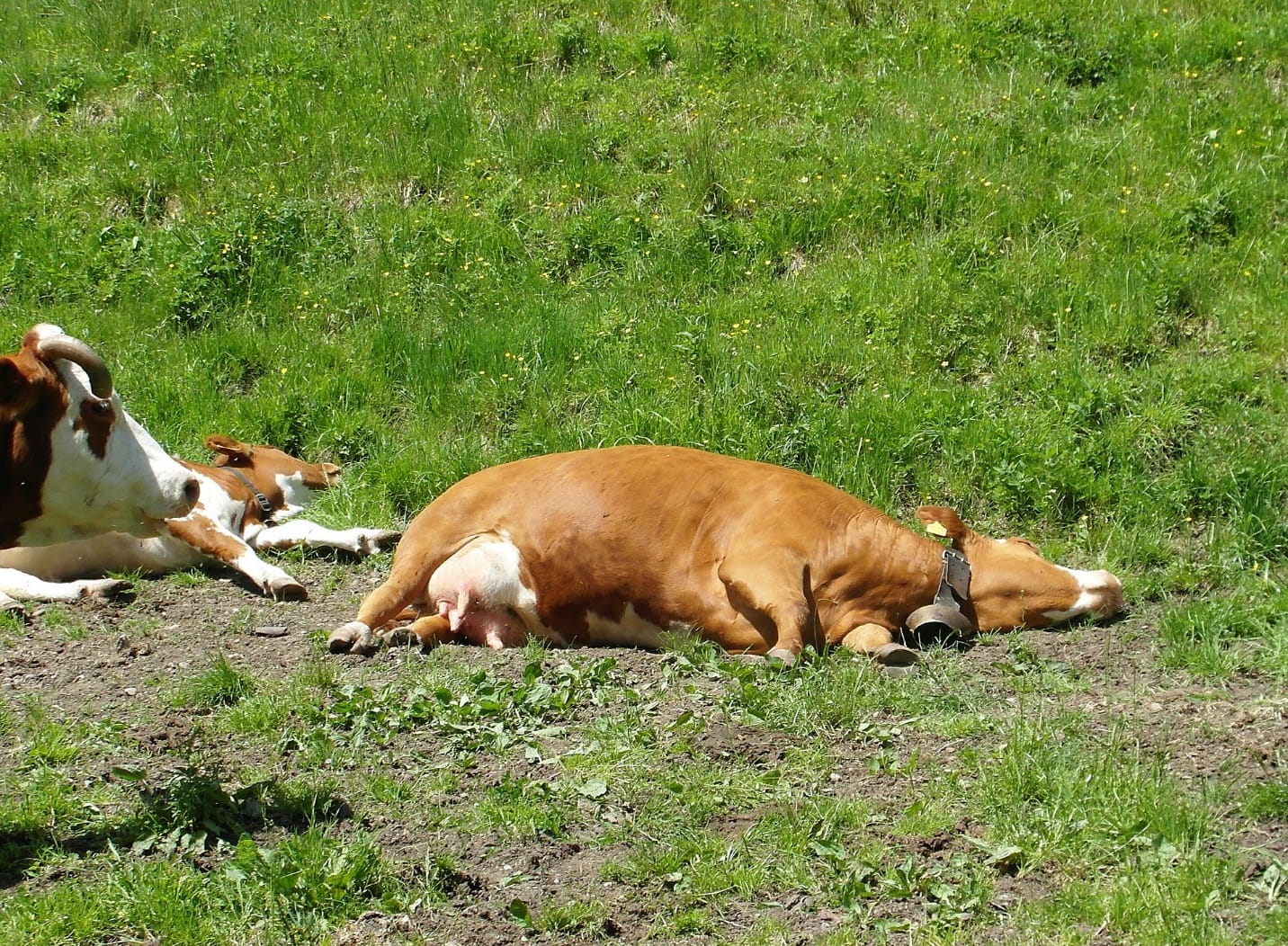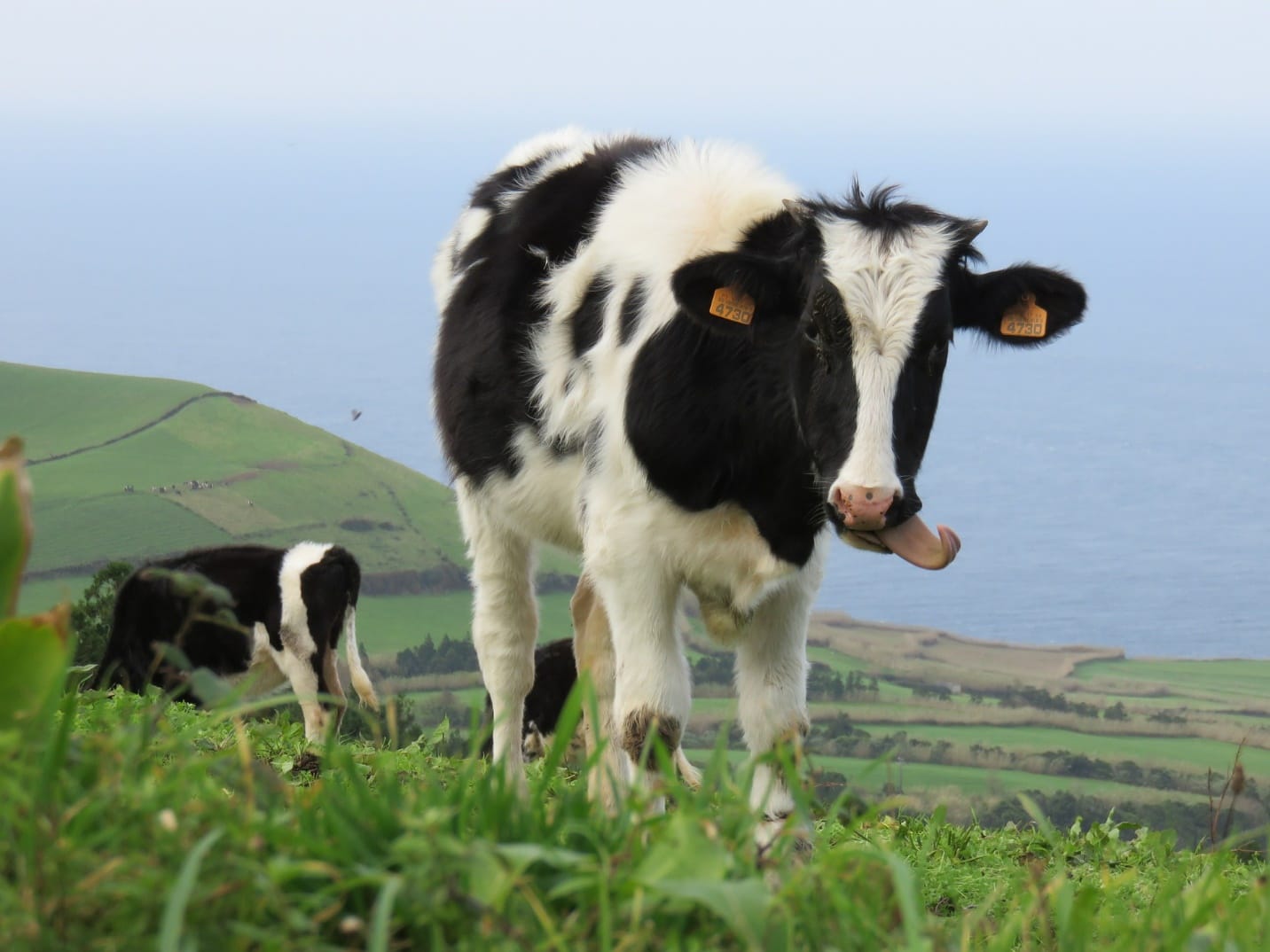Article Summary:
Preventing heat stress is a critical management strategy where planning will go a long way to helping your animals reproduction through the hottest months of the year. In this article, we’ll touch on what heat stress is and the implications of heat stress on livestock reproduction.
If you’re looking to get a better grip on your herd fertility and calving rates, then look no further for some management tips and takeaways that’ll help you and your animals.
Every summer, we rediscover how scorching heat can be! Luckily we have air conditioners, air coolers, ice bars to keep us cool.
Do you wonder how your cow is doing?
Well, she isn’t doing great if you have not taken precautions to protect her from heat stress.
Imagine how sensitive high yielding cows are to heat; just 22C with 50% humidity is enough to make them heat stressed. To be specific, your heat-stressed cows are not eating well, their milk production has reduced as well, and on top of that, the conception rate has decreased to a swooping 35%. That’s bad, and there is more to come if you do not take off heat stress from your cow’s plate.
Let’s talk about; how heat stress affects your cow’s mating behaviour, what mating management strategies can you adopt to prevent it, and how to make amends for the loss heat stress has already caused to your farm.
Ready for a cool dive into your cow’s heat management issues?
Starting off; What is heat stress?
Simple, when the sum of heat generated by metabolic processes and heat absorbed from the surroundings is more than the heat released to the environment, it’s heat stress. Cows are not the only one’s dealing with heat stress; notice how we are when our bodies are boiling in the summer heat.
There are three ways to vent this build-up heat; convection, radiation, and conduction. You can read the details of these methods in our detailed heat stress article here.

Implications of heat stress for your farm
Heat stress costs you money in many different ways;
- Lowers conception rates drastically
- It affects lactating cows more
- Reduces cow’s intake of dry matter (10-20% reduction at ~26C )
- Weight loss in cows and calves
- It brings down milk production
- Make your cows lame and inactive
- Impairs immune function leading to increased incidence of disease
- In the severe scenarios, it leads to death
Without further ado, let’s see how heat stress affects your cow’s mating behaviour.
Heating up! Bad news for Mating Management
Heat in the farm intensifies without a proper heat management plan and lack infrastructure supporting that plan. Lack of ventilation, the rising temperature of surroundings, combined with herding a considerable number of cows in one place, can result in smothering, suffocation, heat stress, and possibly heat stroke.
The apparent signs like reduced milk production come at a later stage. Before these visible signs of heat stress, cows are frustrated by summer heat.
This frustration is visible in cow’s mating behaviour. Therefore, farm management should keep a watchful eye over cows’ fertility and calving rates in summer.
Heat stress: Negative Impacts on Fertility and Calving Rates
High yielding cows are more prone to heat stress even at only 22C with 50% humidity. It affects cows fertility and mating behaviour in many ways.
- Cows are cool creatures. They are likely to stay silent when they are feeling hot. So, heat stress leads to a reduction in the expression of oestrus behaviour. This reduction is a by-product of altered hormone levels associated with reduced activity in cows.
- According to research studies, heat stress results in a 35% reduction in the conception rate. Heat stress reduces the production of the female sex hormone, oestradiol. This hormone is associated with regulating oestrous. Its decreased production leads to ovarian inactivity. On top of that, hormonal imbalances impair oocyte development, resulting in a low conception rate.
Conception rate is the number of pregnant cows divided by the total number of services multiplied by 100.
- Heat stress is alarming for pregnancy growth hormones crucial to embryonic development. In addition, it negatively affects the endometrium in the uterus. The result is a reduced ability to hold the pregnancy and increased embryo mortality.
- Heat stress also affects the calving rate—the calving rate calculated by dividing the number of calves produced by the expected calves.
- Higher heat stress affects the digestion and intake of nutrients due to lower feed consumption. These factors can affect the calf weight at birth, which may have prolonged negative impacts on calf productivity.
- Heat stress increases the instances of embryo death
- Heat stress decreases the 6-week/100-day in-calf rates

To-Do List for Mating Management
Mating management has to consider summer heat factors when timing the calving patterns. This is because mating in summers can be challenging, and heat stress can adversely affect fertility and calving rate.
Keep the following factors in mind when drawing calving strategies;
- The conception rate will be low as heat stress adversely affects the oocyte quality
- Older cows are more susceptible to heat stress and related calving issues, and reduced fertility
- Cows are less likely to show oestrus behaviour
- Bulls will be less active as well
Now let us outline some suggestions for mating management to avoid reduced fertility;
- Intensify the detection of heat stress in cows and take prompt measures to address heat stress. Cows are more likely to show oestrus behaviour if they are not dealing with heat stress.
- Increasing the number of bulls on your farm may be necessary to overcome the inactivity of bulls.
- Ensure that cows are not standing in hot yards for too long while waiting for insemination
- Ensure shady area before insemination process begins
- In the case of artificial insemination, make sure the timing, semen storage, and handling is well planned, and cows are not heat stressed
- Make sure you are not blaming the hot weather or cow for your poor management and inadequate procedures.
Take heat stress off! It's the primary culprit
I’d suggest short-term and long-term measures to strategically control and avoid the heat stress for a healthy cow and a healthy farm.
Below are some actions to consider;
- Set up sprinkler system for cows waiting for insemination
- Ensure water supply for all cows
- Ensure shade and ventilation system
- Feed them on high-quality silage
- Put in place a well thought out tree plantation system
- Install water troughs in all paddocks
- Install cooler or fans for high yielding cows and older cows.
- Review the impact of insemination during hot weather.
That brings us to the end of this article - if this article interests you, check out our growing vault of information on animal health issues. Until we meet again, Happy Calving!
- The Dedicated Team of Pasture.io, 2021-12-08